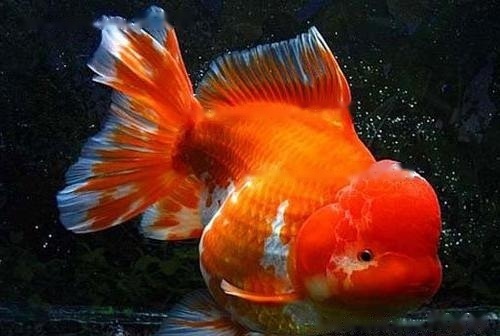Red and white lion fish, the full name is red and white lion head goldfish, is one of the strains of lion head goldfish, and is a relatively common common species in lion head goldfish >. The red and white lionfish and most lionhead goldfish have developed sarcoid on the head, and the sarcoid has extended to both cheeks, and the eyes and gill covers are buckled in the sarcoid. The biggest feature of the red and white lionfish is that their body color is mainly red and white, which looks very eye-catching and gorgeous and noble.

1. Shape characteristics of red and white lionfish
Red The whole shape of the white lionfish looks very attractive at first glance. Their trunk is like a gold ingot, with a high head and well-developed sarcoma on the head, and the sarcoma has extended to both cheeks, eyes and gill covers All caught in the sarcoma. The belly is round and very full. All fins are uniform, with multiple tough fin rays arranged, and the caudal fin is wide and agile. The entire body is composed of red and white, which is easy to identify in the aquarium.
2. Habit characteristics of red and white lionfish
The red and white lionfish are relatively mild fish species, they are naturally slow and swim The time is very slow, and it seems very slow when playing with other fish, but it is this slow state that creates a harmonious atmosphere for the aquarium.
The red and white lionfish are not sensitive to the aquatic environment and have strong adaptability. They are often able to live in waters with temperatures ranging from ten to twenty-eight degrees Celsius. And they are not picky about food, as long as they can find it, they can basically eat it.
3. Feeding methods of red and white lionfish
(1) Polyculture
Red The white lionfish has a gentle personality and likes to swim slowly in the aquarium with other fish species, creating a harmonious atmosphere for the aquarium. So it is very suitable for keeping small and gentle fish in the same aquarium.
(2) Environment
The red and white lionfish have strong adaptability, and do not have high requirements for the aquatic environment, and the temperature range suitable for them is very wide. Wide, between 10 degrees Celsius and 28 degrees Celsius, it is possible, but pay attention to maintaining a constant temperature aquarium environment, so as not to damage their health due to the excessive temperature difference.
![[Dog Training 5] The training method of pet dog dining etiquette](/static/img/12192/12192_1.jpg)




